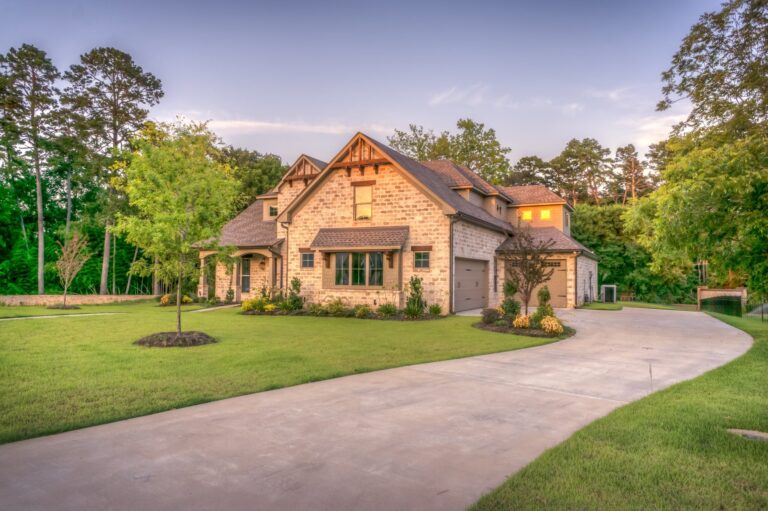A First-Time Investor’s Guide to Flipping Houses – 8 Steps
Real estate investment, specifically flipping homes, is a fast-paced world that requires a blend of diligence, timing, and strategy. KW – Jay Hudson Homes has numerous realtors with experience guiding new investors through the process. We want to demystify some elements for you with this comprehensive guide to flipping houses.
Step 1: In a Guide to Flipping Houses
Making the Right Purchase
You’re thinking of diversifying your investment portfolio by flipping a home. Your potential profit is closely tied to the purchase price. The first step in our guide to flipping houses is making a well-informed buying decision is crucial. If you buy a home for $100,000, invest $25,000 in renovations and can sell it for $200,000, your efforts will bear fruit. Always remember, profit is largely made during the buy.
Step 2: In a Guide to Flipping Houses
Using the Net Investor Sheet
The key to a successful flip is organization and precise calculations. A net investor sheet can help you assess potential profitability after considering purchase price, renovation expenses, taxes, insurance, and even potential property management fees (usually between 8% and 10%) if you decide to rent. Ensure you understand your capitalization rate (cap rate), which represents your profit percentage. Calculate it by subtracting your total out-of-pocket expenses, including utilities and interest, from the selling price. Then, divide the result by your total out-of-pocket expenses.
Step 3: In a Guide to Flipping Houses
Enhancements to Elevate Home Value
It’s essential to strategize home improvements that guarantee a solid return on investment. Transforming a den adjacent to a bedroom into a primary room on the main floor can significantly boost home value. Updating kitchens and bathrooms can both elevate the home’s value and attract more interested buyers. The importance of thorough cleaning and decluttering can’t be overstated; many buyers struggle to see the potential in a messy or dirty home. Always ensure the enhancements make sense both structurally and financially.
Step 4: In a Guide to Flipping Houses
Contractor Collaboration
Your contractor is your cornerstone in home flipping. Before sealing the deal, get an estimate for the envisioned work. Your contractor’s on-site evaluation should include the following with a time and monetary estimate for your consideration.
- Scrutinizing the current structure’s scope of work.
- Identifying potential permitting needs and homeowner association (HOA) restrictions.
- Assessing structural damage.
- Reviewing exterior work.
- Evaluating the lifespan of major home components.
Step 5: In a Guide to Flipping Houses
Time Management
You’ll want to have a clear understanding of your timeline for the house flip. Ideally, the property should not be off the market for more than 30 to 60 days. Rule of thumb is to aim for a 30- to 45-day flip. This is especially crucial if you’re financing the property rather than paying for it in cash, as you’d ideally like to avoid making very many mortgage payments.
Planning is key. Before you even close on the house, have your contractors lined up and a schedule in place. This will enable you to hit the ground running as soon as the property is yours.
Don’t overlook the time you’ll need to invest in the project. Even if you’re outsourcing most of the work to contractors, you’ll still have important decisions to make and tasks to manage. And if you’re planning to do some of the work yourself, be sure to account for that time as well.
Step 6: In a Guide to Flipping Houses
Strategic Decisions
Step 6 could very well be Step 2 in your guide to flipping houses, as success in this competitive and intricate realm relies on striking a delicate balance between cost-efficiency and quality enhancement. As you set out on the journey to elevate a property from bland to grand, the decisions you make early on are crucial. From the strategic choice to conduct a thorough property inspection to selecting the finishing touches, your decisions must be informed, strategic, and attuned to market trends and material costs.
Material Selection
Minimizing costs without compromising on quality is vital. Opt for in-stock materials and explore “contractor rates” or membership discounts with suppliers. Sometimes, a touch-up on existing elements, like cabinets, can be more economical and equally effective. Opting for upgrades that are commonly sought after by buyers, such as tile showers or granite countertops, can not only add value to the home but also increase buyer interest.
Beware of Hidden Costs
In the current fast-paced real estate market, opportunities for house flipping are becoming rare, highlighting the importance of a comprehensive guide to flipping houses. Even when such opportunities do arise, many people rush into purchasing without performing adequate due diligence. Some are even buying properties ‘as-is,’ waiving inspections, and essentially buying sight unseen—without knowing what lies behind the walls, the condition of the plumbing, or whether there’s a septic tank, for example. Such haste can result in unexpected and substantial expenses.
Our team strongly recommends always conducting a property inspection before finalizing any purchase. You can specify an inspection period in your contract, even if you’re keen to secure the property quickly. This gives you an opportunity to back out and recover your earnest money if something unfavorable comes to light during the inspection. You can still choose to buy the property ‘as-is,’ but at least you’ll do so with full knowledge of its condition.
Don’t emulate the HGTV buyers who run into problems due to lack of preparation. Unforeseen issues can easily cost tens of thousands of dollars—like discovering termites and having to replace the entire subfloor, which is not an inexpensive fix.
Always remember that something will come up during a remodel; it’s almost a guarantee. A good rule of thumb is to set aside 10% of your budget for unexpected expenses. If you don’t end up needing it, that’s additional profit for you.
Take the time to do your due diligence as highlighted in this guide to flipping houses. Understand your budget, assess your expenses, and if you can’t commit to that level of preparation, you may want to reconsider the deal altogether.
Step 7: In a Guide to Flipping Houses
Curb Appeal and Clean-Up
A home’s first impression is crucial, so it’s essential to make it great, starting with the exterior and ending with a spotless interior. Curb appeal is often one of the most significant factors in selling a home, as it sets the stage for what buyers can expect inside. After having contractors work on the property, it’s essential to have a landscaping plan in place to keep the yard well-maintained as per the guide to selling houses. Additionally, ensure that the interior of the home is inviting; be prepared to either conduct a thorough deep cleaning or hire a professional cleaning service as recommended in the guide to selling houses.
Step 8: In a Guide to Flipping Houses
Financial Considerations
In the intricate dance of house flipping, a well-crafted guide to flipping houses serves as an invaluable compass. It steers investors through the waters of real estate providing guidance on navigating financing options and the importance of accounting for capital gains tax in profit calculations. This triad of knowledge—market research, smart financing, and tax considerations—forms the bedrock of successful property flipping, ensuring that each decision is made with both foresight and fiscal wisdom.
Navigating Uncertainties
Real estate may be unpredictable, but comprehensive research and a solid guide to selling houses can mitigate risks. Understand local property trends, familiarize yourself with neighborhood comparatives, and ensure your investment aligns with the market’s pulse. Reaching out to your trusted Realtor will add to your understanding of local market trends.
Financing Your Flip
Traditional renovation loans are a viable financing option. These loans are structured around the combined value of the purchase price and the projected renovation costs. However, this can be a meticulous process, with banks overseeing every renovation phase. There are alternative funding methods, like hard money loans, but they come with higher risks due to steep interest rates, therefore in this guide to flipping houses we recommend staying away from these funding options.
Capital Gains Tax
Always factor in the potential capital gains tax when estimating your profit, as advised in this guide to selling houses. If you own the flipped property for less than a year or it isn’t your primary residence, you’ll be liable for this tax.
Embarking on your first home-flipping adventure can be exhilarating but also fraught with challenges and pitfalls. From identifying the right property and calculating your cap rate to choosing profitable upgrades and managing contractors, each phase demands diligence and smart planning. In a fast-moving market, cutting corners or rushing through due diligence can cost you not just financially but also in terms of lost opportunities for greater profits. Time management and financial preparedness are also pivotal; your readiness to tackle unexpected costs and issues can be the difference between a profitable flip and a failed venture.
Remember, the devil is in the details—whether it’s enhancing curb appeal or understanding tax implications. The more comprehensive and deliberate your preparation, the better your chances for a successful, lucrative flip. By adhering to the insights within this guide to flipping houses, you can position yourself to maximize returns and mitigate the risks inherent in the real estate flipping market. And when you finally place that ‘Sold’ sign in the yard of a beautifully flipped home, the satisfaction and financial rewards can make all the hard work well worth it.








